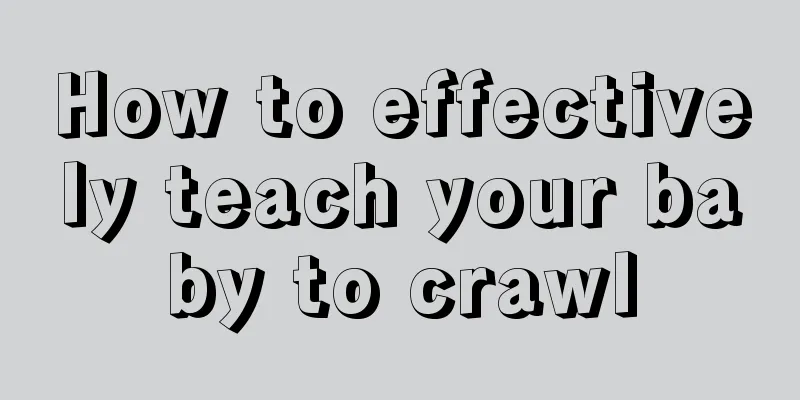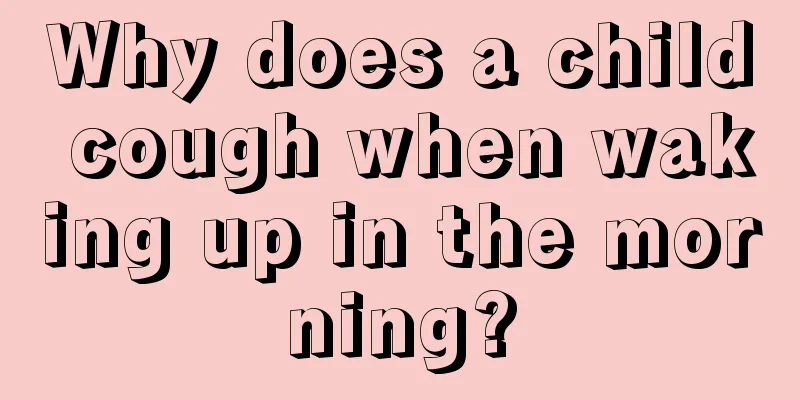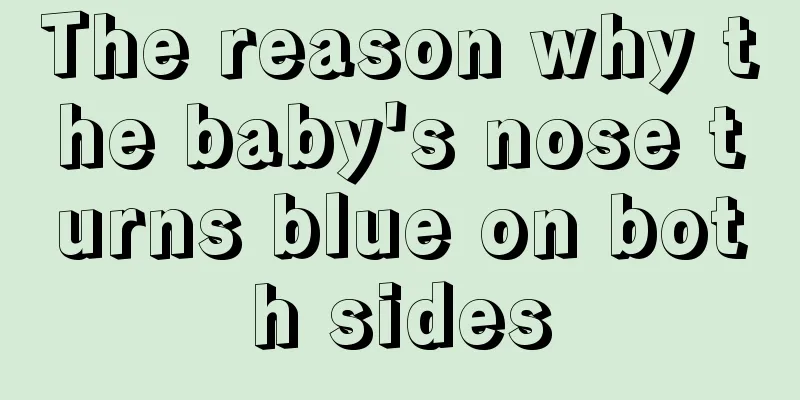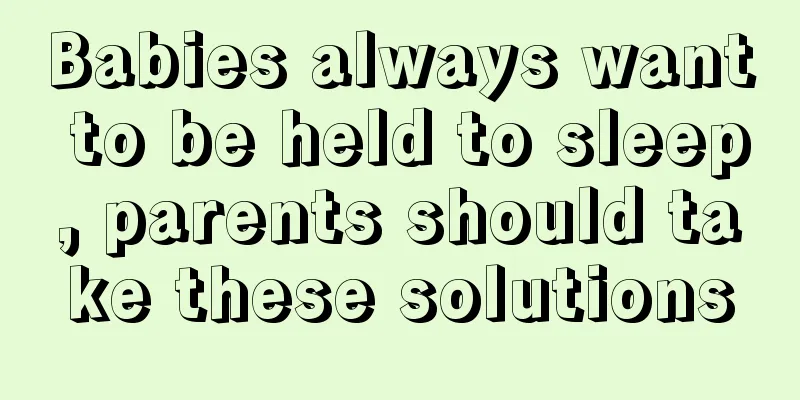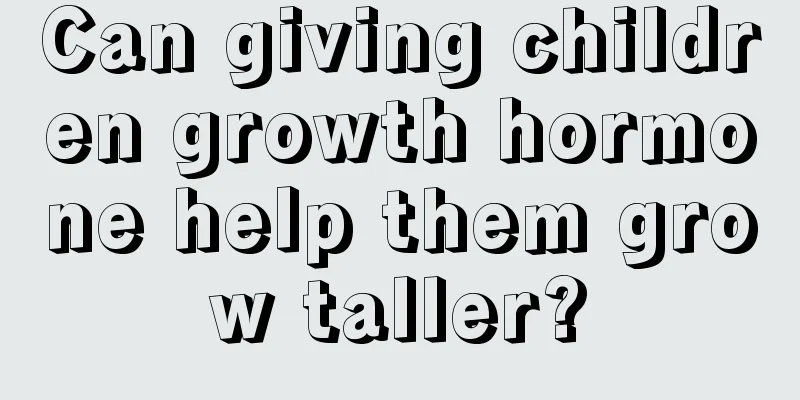Diet therapy for children's chronic cough

|
What are the dietary treatments for children’s long-term cough? Cough is a common disease. There are many reasons for cough, but specifically speaking, cough is divided into wind-cold cough and wind-heat cough. Although they are both coughs, the treatment methods are different. Every spring and winter, the number of people coughing increases significantly, especially the elderly and children, who account for the majority of the sick population. Because children are still relatively young and have poor physical fitness, they often cough for a long time, which makes many parents and friends very worried. In particular, many children are very resistant to injections and medication. Then only diet therapy is a good solution. So what are the diet therapy methods for treating children's long-term cough? The specific method is as follows: 1. Cold and cough 1. Ginger + brown sugar + garlic. When a child catches a cold, drinking warm ginger and brown sugar water can play a good therapeutic role. If the child also has a cough, add 2 to 3 cloves of garlic to the ginger and brown sugar water and cook together. Cook over low heat for 10 minutes to cook off the spiciness of the garlic so that the child will be willing to drink it. 2. Steamed garlic water: Take 2 to 3 cloves of garlic, smash them, put them in a bowl, add half a bowl of water, put in a piece of rock sugar, cover the bowl and put it in the pot to steam. After boiling over high heat, switch to low heat and steam for 15 minutes. When the garlic water in the bowl is warm, feed it to your child. The garlic does not need to be eaten. Generally 2 to 3 times a day, half a bowl each time. Garlic is warm in nature and enters the spleen, stomach and lung meridians. It is very effective in treating cold coughs and kidney deficiency coughs. It is also convenient and simple, and children are willing to drink it. 3. Roast the oranges directly over low heat, turning them over constantly until the peel turns black and hot air comes out of the oranges. Wait for the orange to cool down a bit, peel the peel and let your child eat the warm orange segments. If it is a big orange, the child can eat 2 to 3 slices at a time. If it is a small tribute orange, the child can eat one at a time. It is best to take it with garlic water, 2 to 3 times a day. Oranges are warm in nature and have the effect of resolving phlegm and relieving cough. After eating roasted oranges, the amount of sputum will be significantly reduced, the antitussive effect is very obvious, and children are willing to eat it. 4. Scrambled eggs with sesame oil and minced ginger: Put a small spoonful of sesame oil into the wok, add the minced ginger when the oil is hot, fry it in the oil for a while, then beat in an egg and stir well. When children have a cough due to cold or physical weakness, let them eat this medicine once every night while it is hot before going to bed. If you persist in eating this medicine for a few days, you will see obvious results. 5. Pear + Sichuan peppercorns + rock sugar: Wash a pear, cut it in half horizontally, remove the core, add 20 Sichuan peppercorns and 2 rock sugars, put the pear halves together in a bowl, and steam it for about half an hour. One pear can be eaten in two times. Steamed pears with pepper and rock sugar are very effective in treating cold and cough, but some children don’t like the taste of pepper, so parents can choose for themselves. The above are dietary recipes for treating cold and cough. While parents use these methods to treat the disease, they should also pay attention to the fact that the following cold foods should not be eaten by children: mung beans, crabs, clams, snails, snails, persimmons, grapefruit, bananas, kiwis, sugarcane, watermelons, melons, bitter melons, water chestnuts, arrowheads, kelp, seaweed, raw radishes, eggplants, artemisia selengensis, lotus roots, winter melons, loofahs, sweet potatoes, etc. Second, wind-heat cough can be treated with food 1. Pear + rock sugar + Fritillaria cirrhosa. Cut the pear horizontally along the stem, dig out the core and add 2 to 3 pieces of rock sugar, 5 to 6 pieces of Fritillaria cirrhosa (the Fritillaria cirrhosa should be crushed into powder). Put the pear in half and put them in a bowl. Steam it for about 30 minutes and feed it to your baby in two portions. This recipe has the effects of moistening the lungs, relieving cough and resolving phlegm. Because babies nowadays generally like to stay cool, they turn on the air conditioner when they are hot and eat cold fruits all year round, so the number of babies suffering from wind-heat cough has decreased significantly. 2. Boil radish water: Wash the white radish, cut it into 4 to 5 thin slices, put it in a small pot, add half a bowl of water, bring it to a boil, then simmer for 5 minutes on low heat. Wait until the water cools down a little before giving it to your baby. This recipe is very effective in treating wind-heat cough, dry nose and throat, and dry cough with little sputum. It is more effective for babies under 2 years old. 3. You can also give your baby the following foods: ① Persimmon: It is very cold in nature and can clear away heat, resolve phlegm and relieve cough. But the baby can only eat one at a time, and eating too much will make his stomach uncomfortable. ② Watermelon: It is cold in nature and can cure all fever symptoms. If your baby suffers from wind-heat cough in summer, you can let him eat more watermelon. ③Loquat: cool in nature, can moisten the lungs, reduce phlegm and relieve cough. It is suitable for babies with febrile cough and yellow sputum. ④ Water chestnut: It is cold in nature. Water chestnut water can resolve phlegm and clear away heat. Take 2 to 3 water chestnuts, peel them, cut them into thin slices, put them in a pot, add a bowl of water, and cook on the fire for 5 minutes. This prescription is effective for patients with febrile cough and sputum. When your baby suffers from wind-heat cough, you can also give him winter melon soup, fried loofah, fried lotus root slices, and fried bitter melon, which can also help eliminate internal heat, remove fire, and relieve cough. Spicy foods that easily cause inflammation are prohibited, such as mutton, dog meat, black-bone chicken, fish, shrimp, dates, longan meat, lychees, walnut kernels, peppers, cherries, and silkworm pupae. The above are the dietary therapy methods for treating children’s long-term cough. Because coughs can be divided into wind-cold and wind-heat, there are specific methods for specific cough situations. Dietary therapy for treating cough does not make children resist injections and medications, and is deeply loved by children. Therefore, when a child has symptoms of coughing, it is important to check the cause of the child's cough, and then choose appropriate dietary therapy methods based on the specific cause. In this way, dietary therapy plus drug treatment, such a multi-pronged approach, will definitely be able to defeat the cough. |
<<: What should I do if my child has irregular menstruation?
>>: What are the reasons for the baby's lower lip to turn purple?
Recommend
What to do if your 7-month-old baby has a stuffy and runny nose
We all know that children's resistance is rel...
What is teeth grinding in children?
Many people experience teeth grinding when they s...
The treatment of sinusitis in children is like this
Sinusitis in children has a great impact on their...
What are the early symptoms of cataracts in infants?
I believe that when a new life appears in a famil...
How to treat children's night terrors
Night terrors in children are relatively common. ...
What to do if your child grows slowly
Many parents are concerned about whether their ch...
Why does my 3-year-old baby refuse to eat?
When a baby shows any adverse symptoms, a physica...
What should I pay attention to when removing vernix caseosa from my baby’s labia?
Vernix caseosa refers to a type of fat that is pr...
How to treat baby's cough and sore throat
Coughing is a common problem for most babies. The...
What to do if your baby cries while sleeping at night
Many mothers must have had this experience when t...
What to do if children's nails are layered
Some children's nails have abnormal condition...
Three-year-old children frequently shake while sleeping
We all know that calcium is an indispensable subs...
Why do newborns fart a lot and smell bad?
It is normal for newborns to fart. Generally spea...
Three month old baby's head tilted back
We all know that in the first few months after a ...
How to tell if a child is okay if he falls on his head
When babies are about one year old, they will slo...
